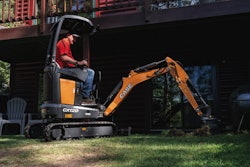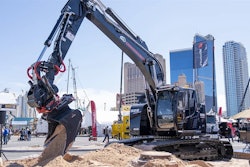Right off the bat, Guy Walenga tells me he doesn’t like the title of the story I’m calling to interview him for. “I don’t like the word ‘failure,'” Walenga says. He’s not being rude. He wants to make a point: “When you say a tire fails, it makes it sound like it’s a living, breathing thing that committed suicide or something,” Walenga says. “A tire only works as well as it is maintained. It’s only as good as the application it’s designed for. Even the best tire gives up its life over time. But it just doesn’t fail. Bad things happen and when they do, a tire becomes an expensive tattletale as to how good your maintenance program is.”
Walenga ought to know. He’s a tire engineering manager with Bridgestone-Firestone’s North American Commercial Products division. And he says truck tires – tires on all vehicles, really – shouldn’t be taken for granted: The jobs they do every day are nothing short of remarkable. “I liken a tire, especially the inside of a tire and what it’s subjected to, as an environment as hostile as outer space,” Walenga says.
Stop and think about the loads and speeds a tire’s asked to live with, Walenga suggests. Now, add heat and centrifugal force to that equation. “That’s a tremendous amount of energy and force being inflicted on a tire,” he says. “All these forces are constantly trying to pull things – such as steel and rubber – apart that have been engineered to work together. Even as punishing as these conditions are, tire casings can be used up, recycled with new tread and deliver the same performance all over again – provided they are maintained properly in the first place.
Yet despite all these hostile forces most tires perform so consistently we never give them a second thought – unless they fail.
“A lot of people look at a tire and think: It’s black. It’s round. It holds the truck up… And they never give it any more thought than that,” laughs Al Cohn, technical marketing manager, commercial tires, Goodyear. “But next to fuel, tires are the second highest maintenance expense your trucks will incur. So it makes sense to think about how you can avert tire failures.”
Dealing with road debris
Perhaps some clarification is in order at this point: The words “tire failure” conjure up images of blowouts, shed casings, sidewall failures and bent rims.
But catastrophic events aren’t the only way tires can fail. “Because they’re so harsh, most construction applications measure tire life in hours instead of miles,” Walenga says. “And all tire maintenance work is based on hour meters. If your tires aren’t getting to their full life – if they’re only lasting 500 hours instead of 1,000, then they’re not working for you like they were designed to, and that’s tire failure.”
If this sounds familiar, then you’re going to have to perform a little detective work to figure out exactly why your tires are failing. A good starting point, Cohn says, is making sure the tires you’re using are the right fit for your jobs. “Years ago, tire manufacturers tried to market one tire to do many things – long-haul, construction, urban delivery… you name it,” he says. “And tire performance and life was mediocre in all of them. So the strategy for several years now has been to specifically design tires around applications, right down to axle-specific tires for rigidly defined jobs.”
Taking that concept a step further, Walenga says, “Having a good relationship with your tire dealer is the best way to ensure you’re spec’ing tires that best suit the terrain and application they will work in. That means that they will have the right tread design for traction and control. They’ll have the proper tread depth. They’ll have the proper compounding for the wear rate and for any cut and chip resistance on the types of tires for the off-highway operation. All those things have to be taken into consideration. Because if you’re not starting with the right product you’re not going to get the best service out of it, even with proper pressure and maintenance.”
Obviously, the most common reason you find tires coming out of service in construction is due to road hazards. It’s tough to keep tires in service when you’re constantly traveling over debris like rebar, tools and rocks, or picking up nails. Many times, when an object breaks into a tire cavity, the damage can be repaired and the tire returned to service. Many times it can’t because the damage is too severe. “But that’s part and parcel of the construction industry,” Walenga says. “Really, the only thing you can do is coach your drivers to be aware of tire hazards and not run over them. If your drivers open their eyes, they can avoid hitting some items and avert some failures that way. Good haul road maintenance is another way to dramatically improve tire life.”
If road debris seems like an insurmountable obstacle, new advances in tire technology may offer some solutions. Goodyear introduced its Duraseal technology at ConExpo-Con/Agg earlier this year specifically for construction and other hazardous vocational applications.
Duraseal tires are built with a gel-like, solvent-free compound in their inner liners. This material has the consistency and feel of vulcanized tire plugs and acts much the same way, instantly sealing any punctures in the tread area up to 1/4 inch in diameter.
Next month, in the second installment of Why Tires Fail, learn strategies for identifying the causes of tire failures and extending tire life.








